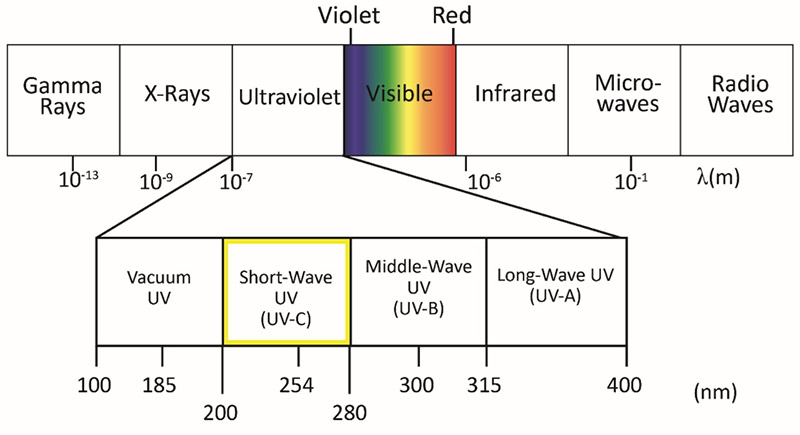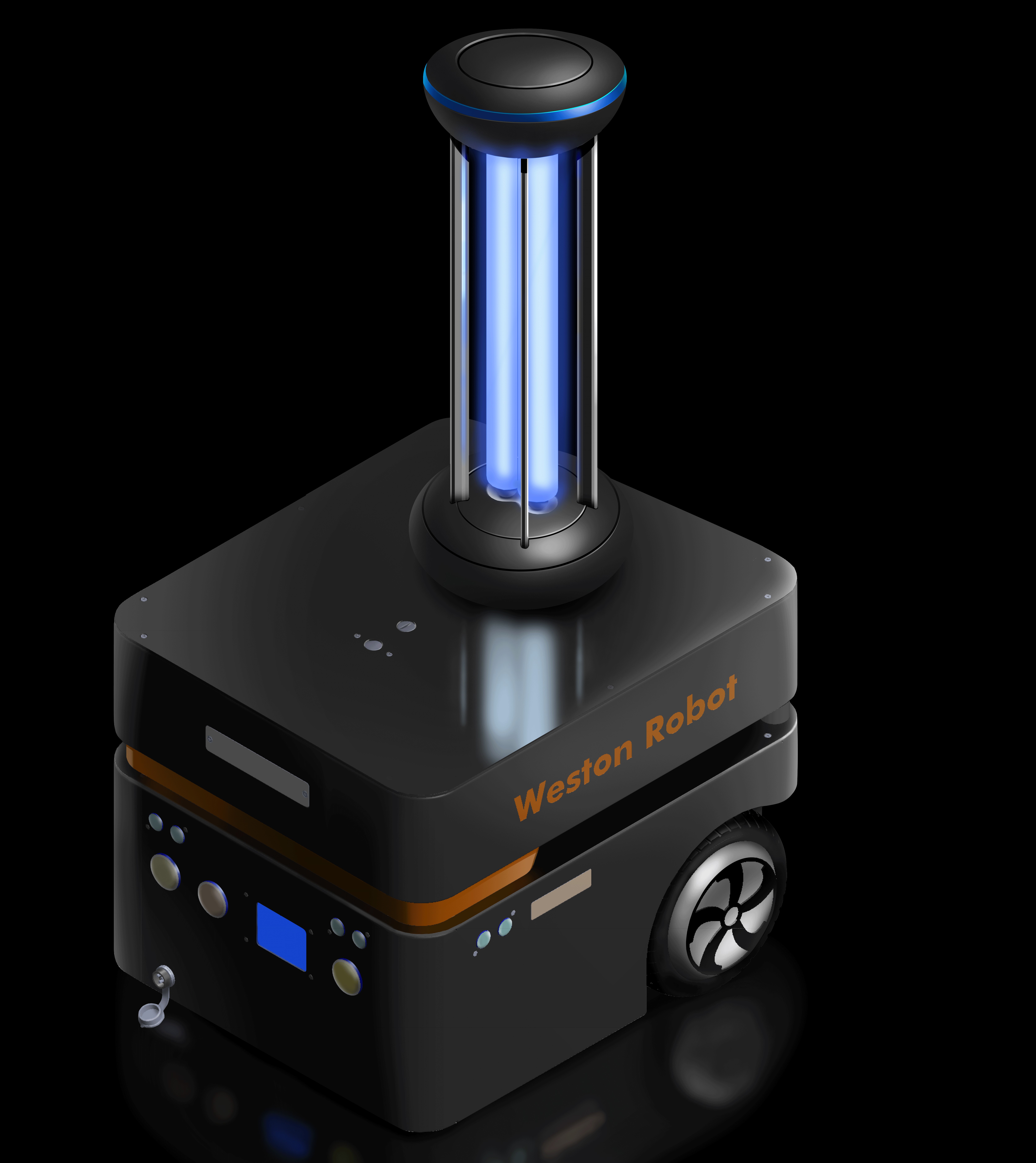Battling COVID-19 with disinfecting robots
COVID-19, the disease caused by the novel coronavirus, has created a global lockdown, the likes of which hasn’t been seen in over a century. Responses in hot spots have varied from recommended social distancing to mandated self-isolation. While the public does its best to heed these directives, critical workers such as first responders, nurses and doctors, transit employees, grocery store employees and others remain at their jobs.
One group being relied heavily on during this time of crisis is the set of people tasked with disinfecting contaminated areas, putting them at great potential risk. To reduce human contact in these affected indoor and outdoor areas, disinfecting robots are being developed.
“Instead of manual disinfection, which requires workforce mobilization and increases exposure risk to cleaning personnel, autonomous or remote-controlled disinfection robots could lead to cost-effective, fast, and effective disinfection,” states an editorial recently published in Science Robotics.
Ten days to create a new robot
The New York Times published a timeline of COVID that starts on December 31, 2019. In less than four months since the first reported cases, more than 2.5 million cases have been confirmed. This pandemic hit fast and technology companies are working hard to keep pace. One in particular, Weston Robot, a developer and supplier of robotics, reacted quickly to help battle the virus. The team developed a prototype in ten days, leading the way for other robotic developers to do the same.
“Back to January, when COVID-19 was first proven to be infectious among humans, the team spent less than 10 days to come up with the first sanitizing robot prototype and to demonstrate the feasibility of using robots. Many robotics companies followed,” says Dr. Zhang Yanliang, managing director and chief scientist at Weston Robot, Singapore.
“Using a Model-Based Design approach from MathWorks, along with its advanced tools such as Stateflow, Robotics System Toolbox and Coder products, we were able to accelerate the pace of robot prototyping,” added Dr. Zhang.
Weston Robots did more than develop one robot to help fight COVID and protect frontline workers. They recently announced three new robots that each contribute in unique ways.
Disinfecting robot for outdoor spaces
Business Insider reported on the efforts to disinfect public areas, stating, “Across the world, disinfection teams have descended upon kindergartens, state capital buildings, markets, mosques, airports, and public roads. Teams of hazmat-suited workers are spraying low-concentration bleach-and-water mixtures from trucks, guns, drones, and robots.”
Weston Robots developed a robot for outdoor use. The sanitizing robot, jointly developed with AgileX in Dongguan, can be controlled remotely via a 4G network, enabling the cleaning crew to be physically removed from both the virus and the cleaning solution.
This robot weighs 45 kg and travels up to 6 km/h. It can disinfect an area of 160k square feet with each battery cycle.
Safely disinfecting indoor spaces
Cleaning interior space is often more critical because tests show that the novel coronavirus lingers on some surfaces for days. Experts agree that disinfecting surfaces commonly touched in places like hospitals, schools, and religious sites, can mitigate the spread of the virus. But spraying the surfaces with chemical solutions isn’t safe.
One way to eliminate the virus without chemicals is through the use of UV light. According to the Illuminating Engineering Society (IES), “UV-C kills living bacteria, but viruses are technically not living organisms; thus, we should correctly say ‘inactivate viruses.’ Individual, energetic UV-C photons photochemically interact with the RNA and DNA molecules in a virus or bacterium to render these microbes non-infectious. This all happens on the microscopic level.”
“Wavelengths in the photobiological ultraviolet spectral band known as the ‘UV-C,’ from 200 to 280 nanometers (nm), have been shown to be the most effective for disinfection, although longer, less energetic UV can also disinfect if applied in much greater doses. UV-C wavelengths comprise photons (particles of light) that are the most energetic in the optical spectrum (comprising UV, visible, and infrared) and therefore are the most photochemically active.”
Weston Robot also created a robot for this disinfecting indoor spaces use case. This robot uses a UV light and autonomous navigation to traverse indoor spaces.
According to Weston Robot, “The users can do the mapping on a cell phone and choose the way points. The robot will follow the way points and stops at each way point till the disinfection job is done. It can also automatically return to the charging station once the battery is below a threshold.”
A robot offers a health check and supplies
Health experts are warning that we must stay vigilant to reduce the risk of a second wave of infections. Contact tracing and testing are a high priority. One of the most critical steps will be to keep infected people from spreading the disease.
In the Fortune Magazine article, Focusing on fevers: Thermal-imaging tech is on the rise. Can it help fight the coronavirus?, it was stated, “[…]the coronavirus epidemic has put a spotlight on thermal-imaging technology as a potentially important tool in combating pandemics and protecting the global economy.”
Weston Robot’s third COVID-fighting robot is designed to identify potential COVID infections through temperature scanning. It is equipped with a thermal infrared camera accurate to +/- 0.5 degrees Celsius. It uses the same robotic platform as the indoor UV sanitizing robot, so it can operate autonomously.
It was designed for use in areas such as shopping malls, large cafeterias, and airports. This robot is also equipped to deliver hand sanitizer and tissues as needed.
COVID-19 robots are paving the way
We are becoming accustomed to seeing robots in our lives, doing everyday tasks from scanning store shelves to vacuuming our homes. But during a crisis such as the COVID pandemic, we are seeing that these devices can help keep people safe by minimizing our contact with the virus and helping to lessen the spread.
“COVID-19 could be a catalyst for developing robotic systems that can be rapidly deployed with remote access by experts and essential service providers without the need of traveling to front lines,” states Science Robotics.
 Cleve’s Corner: Cleve Moler on Mathematics and Computing
Cleve’s Corner: Cleve Moler on Mathematics and Computing The MATLAB Blog
The MATLAB Blog Guy on Simulink
Guy on Simulink MATLAB Community
MATLAB Community Artificial Intelligence
Artificial Intelligence Developer Zone
Developer Zone Stuart’s MATLAB Videos
Stuart’s MATLAB Videos Behind the Headlines
Behind the Headlines File Exchange Pick of the Week
File Exchange Pick of the Week Hans on IoT
Hans on IoT Student Lounge
Student Lounge MATLAB ユーザーコミュニティー
MATLAB ユーザーコミュニティー Startups, Accelerators, & Entrepreneurs
Startups, Accelerators, & Entrepreneurs Autonomous Systems
Autonomous Systems Quantitative Finance
Quantitative Finance MATLAB Graphics and App Building
MATLAB Graphics and App Building













Comments
To leave a comment, please click here to sign in to your MathWorks Account or create a new one.